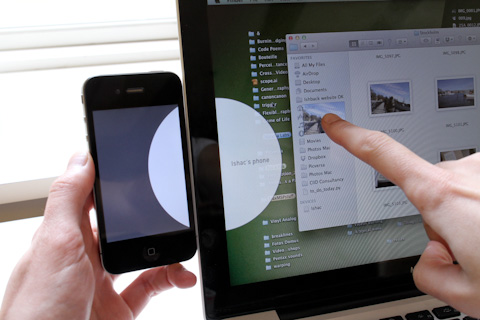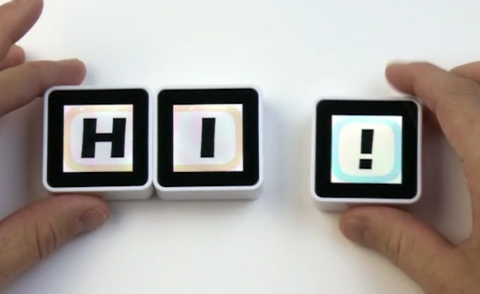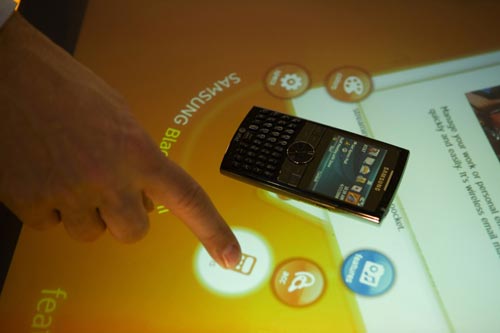Natural interactions with spatially aware devices
This weekend I wanted to transfer some articles I had in my web browser to my Kindle, to read them later. Just thinking about all the necessary procedures made me rule out the idea.
Despite how well virtually connected our devices are (iCloud, Dropbox, …), they still lack a tangible connection. A (representation of a) physical connection of those devices would facilitate a more intuitive interaction built on traditional mental models from the physical world. That’s one of the main reasons why kids interact with iPad so naturally, because it uses interfaces based on natural, tangible interactions.
I tried to imagine how a more intuitive interaction would be while transferring media between devices, sketching it in a short video*:
The interaction feels natural, and provides a seamless transition while consuming media – in this case, listening to music from being in front of the computer to going mobile. It’s a more intuitive way to synchronize media across devices, and the ‘cloud’ would take care of the data transferring in the background (high res files, music that is not existing in your device yet, etc.)
Portable devices can locate other devices quite precisely on a large scale (using GPS, wifi triangulation, etc.) but in small spaces they only ‘sense’ the existence of other devices (bluetooth, local network) – neither the absolute nor relative position of other devices are being measured with precision enough to enable a physical connection beyond the cable.
Some platforms use a physical connection using the device itself to create more intuitive ways to interact with them. Sifteo cubes use IrDA transceivers to detect other cubes nearby (<1cm). Microsoft Surface is using near-infrared light and cameras to detect objects sitting on the table. Last versions of Surface use PixelSense technology, being able to detect the object using micro sensors embedded on the screen pixel array.
It seems that desktop and tablets are converging into a personal touch-screen device. Incorporating the technologies mentioned above on these devices would create a new canvas for exploring more natural ways of engaging with media on the tangible realm across multiple devices.
*The video sketch was done in a a few hours using the following tools:
– Keynote for the animations.
– Screenium for screencasting.
– iMovie for video editing.
– Freesound.org for the sound fx.






April 16th, 2013 at 7:25 pm
[…] una vez acostumbradas a ellas. Una de las que me ha llamado la atención es aquella imaginada por Ishac Bertran que permite transferir archivos de un dispositivo a […]